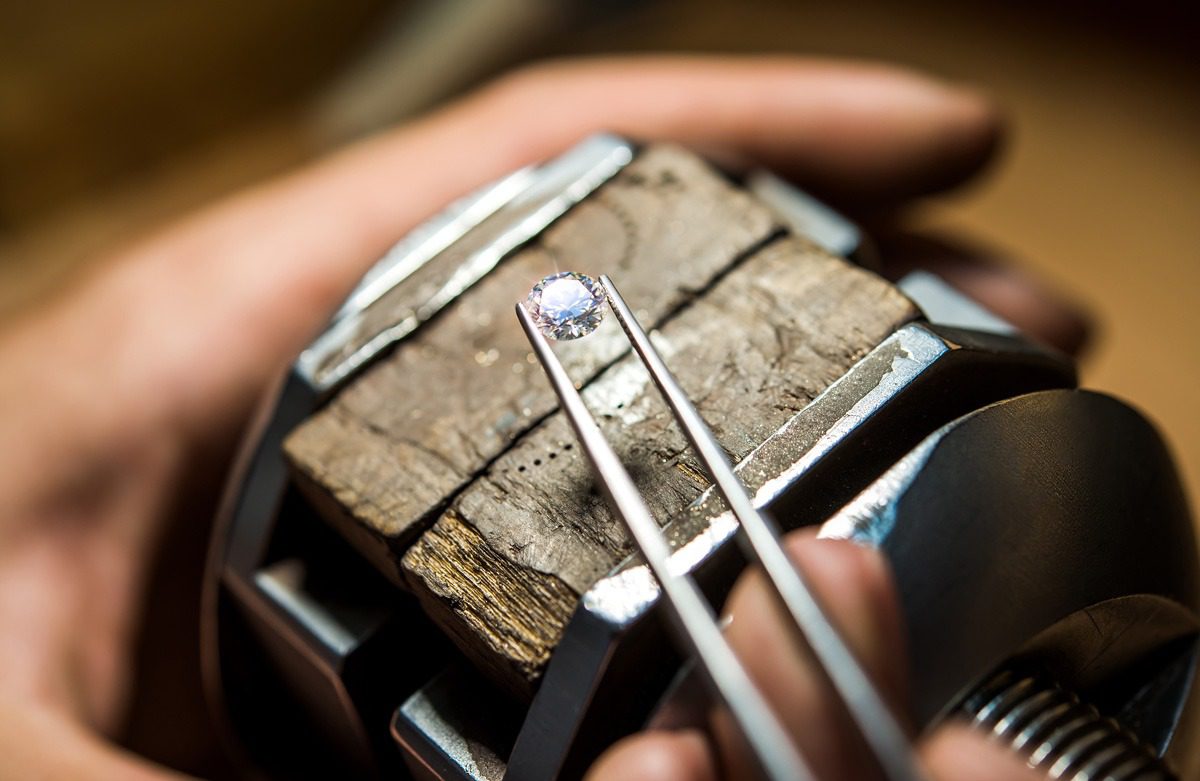
When you consider a diamond’s cut you may think of round, heart or princess cut, and other shapes like marquise, pear or cushion, but that’s not really what understanding diamond cut is all about.
You’re not alone; most people often mistake a diamond’s cut to mean its shape.
A diamond’s cut is essential to the stone’s complex beauty, style and overall value. Cut technically speaks to the proportions of a diamond, effectively determining its level of sparkle or – in gemological terms – its fire, brilliance, and scintillation. It actually has the most influence on how much a diamond twinkles, so much so that a diamond can be have perfect clarity and an excellent colour grade, but still appear dull if the cut is poor.
Shine bright like a diamond
A precise level of artistry and craftsmanship are demanded to configure a stone so that its symmetry, polish and proportions unleash the diamond’s light.
In a well cut diamond, the light perfectly strikes each pavilion facet at the optimal angle to allow the most light to traverse back out the crown at a low angle – this bent light appears to the observer’s eye as a lively fire and will boost the other Three Cs!
Simply put, when a diamond is cut correctly, it sparkles more, as the light returns out of the top of the diamond rather than leaking out through the bottom of a poorly cut stone.
The science of sparkle
There are several factors to consider regarding cut:
- Brilliance – referring to the refraction, total internal reflection and dispersion of light. The light enters from the top and is broken down within the diamond. The way it reflects back out, by bouncing off the interior of the stone, creates the brilliance and shine.
- Fire – otherwise known as dispersion, this refers to the way the light disperses into the colour spectrum and then reflects back to the eye.
- Scintillation – this refers to how the diamond sparkles when it moves. We’ve all experienced the bright shine of a stone as it twinkles in the sunlight. This is showing how well the diamond is cut.
The anatomy of a diamond
When talking about the cut of a diamond it is common to discuss the anatomy of the diamond. The three most influential components are diameter, table and depth; these ratios feature predominantly when deciding a diamond’s cut grade.
When cut correctly, the light will bounce off the inside of the diamond and return out of the top, ensuring brilliance. This means the light refracts off every facet at the best angle.
If a diamond is cut too shallow, the light will hit the angles at too low an angle, meaning it will exit from the sides, instead of bouncing back to the top and reflecting to your eyes. People are often deceived by shallow cut diamonds as they appear larger. However, don’t be fooled; this often means their brilliance, fire and sparkle are significantly reduced.
When a diamond is cut too deep, the light will hit at a much sharper angle, and immediately reflect to the other side. The light, having nowhere to go, reflects through the bottom of the diamond. This means the light is dulled, causing the diamond to appear less vibrant.
Which grade to choose
Each grade differs and classifies the reflective level of the stone. The Gemological Institute of America (GIA) have identified six grades of cut, based on the reflective properties of the diamond. Gemologists recommend choosing the highest cut grade diamond within your price range, preferably very good or better, as cut has the greatest impact on the beauty of the stone. Avoid poorly cut diamonds as the light will not reflect correctly, and despite the colour or carat you will be left with a dull appearance.
How each grade differs
| Excellent | Excellent cut diamonds are classified as an exquisite cut, providing an exceptionally high level of fire and brilliance. Almost all of the incoming light is reflected through the top. |
| Very good | The cut isn’t necessarily perfect, but most of the light is emitting from the top of the stone. This means a very high level of brilliance. To the naked eye, very good diamonds provide a similar amount of sparkle to excellent grade diamonds. |
| Good | In the case of good cut diamonds, a lot of the light reflects through the top. The stone does showcase a fair amount of brilliance and sparkle, without breaking the bank. |
| Fair | Fair diamonds have been imperfectly cut resulting in a duller diamond. They offer little brilliance because the light easily escapes from the bottom. Often, fair cut diamonds suffice for smaller carats of diamonds acting as side stones. |
| Poor | Poor cut diamonds are generally those that have been cut too deep or too shallow. They yield nearly no sparkle, brilliance or fire because light escapes from both the sides and the bottom. |
Remember, regardless of the other Three Cs (clarity, colour and carat), a poorly cut diamond will not give you the sparkle you desire. On the flip side, a well-cut diamond will appear vibrant and full of fire, even with a lower grade of colour or clarity, giving exceptional life to your jewellery.
by Australian Diamond Brokers : May 5th 2017 Come visit our store or browse our website to find out more.